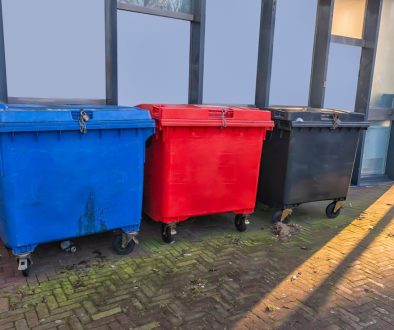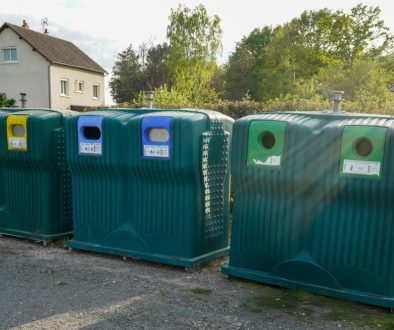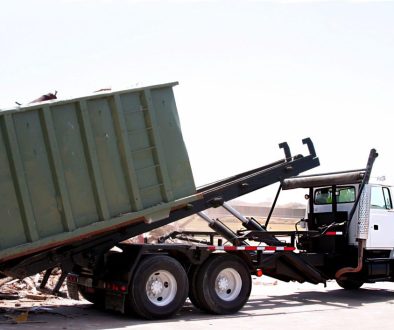Old workshops can hold all kinds of surprises. Tucked behind rusty shelves or inside forgotten storage cabinets, you might find leftover tins of paint, old motor oil, cleaning chemicals, or even things you don’t immediately recognise. Many of these items can be harmful if they’re not handled and stored the right way. Whether it’s from a personal project that got paused years ago or items left behind by the last owner, chemical safety in an old workshop shouldn’t be taken lightly.
If you’re in Nantwich and clearing out an inherited or unused space, keeping yourself and others safe should come first. Thinking ahead might save a lot of trouble later. Some chemicals can react when exposed to the air, temperature shifts, or even one another. Taking the time to understand what’s there and what to do about it makes the whole process easier, safer and a lot more manageable.
Identifying Hazardous Chemicals in Old Workshops
Workshops often become collection points for old containers, outdated supplies and leftover materials from past repairs or projects. Over time, labels fade or go missing, and the contents become unclear. That’s when things get tricky. You don’t want to end up touching or breathing something that’s unsafe just because it looks harmless.
Here are a few types of hazardous chemicals you might come across:
– Solvents like white spirit, turpentine or paint strippers
– Oils and lubricants, including engine or brake oil
– Acids and alkalis used in metalwork or cleaning solutions
– Old paints and varnishes, some of which might contain lead
– Aerosols and compressed gas cylinders
– Pesticides, herbicides or algae cleaners
Figuring out what’s dangerous isn’t always easy if the labels are damaged or missing. But there are signs to look out for:
– A strong, chemical smell even when the lid is shut
– Corrosion or stains around the storage area
– Bulging or rusted containers
– Split, faded or missing labels
– Unusual residue or colour changes inside clear bottles
If you’re ever unsure, it’s better to treat something as hazardous unless a label or trusted resource proves otherwise. Avoid opening any containers with missing labels, especially ones that feel pressurised or appear to have leaked.
Old fluorescent tubes, electrical parts or batteries can also pose safety concerns, so they should be handled and disposed of in the right way. Identifying and carefully listing what’s in the space is a useful first step before thinking about storage or disposal.
Proper Storage Practices
Once you’ve got a clearer idea of what you’re dealing with, it’s time to think about how everything should be stored. Many accidents in workshops happen because chemicals were kept too close together, weren’t sealed properly or were exposed to heat or moisture.
A few simple practices go a long way toward creating a safer storage setup:
1. Keep similar items together
Group chemicals by type. Store paints with other paints, engine fluids with similar lubricants and so on. Never mix unknown substances together.
2. Choose strong, stable shelving
Use shelves made of solid material that won’t easily tip over. Keep heavy containers low down to prevent injuries or spills.
3. Use clear labels
If you’ve got items without labels but have identified what they are, make new labels using waterproof markers or printed stickers. Include the name and date stored.
4. Store away from heat and sunlight
Most chemicals should be kept in cool, dry environments. Direct sunlight or warmth can cause containers to expand, leak or even burst.
5. Make sure lids are secure
Check that tops and caps are tight. Broken seals or loose lids can let fumes out or make spills more likely.
6. Avoid reusing food containers
Never store chemicals in bottles or tubs that originally held food or drink. It’s an easy way for someone to make a dangerous mistake.
For workshops in older buildings, it’s worth checking that there’s no risk of water leaks or damp in your storage area. Over time, moisture can eat away at labels and cause metal tins to rust through. A few plastic trays underneath the shelves can help contain small leaks or spills if they happen.
Thinking about proper storage now can help lower risks in the long run, especially when you’re planning to sort or dispose of chemicals later on. Keeping things tidy doesn’t only make the workshop look better, it makes it safer too.
Disposal of Hazardous Chemicals
Once you’ve separated and stored everything properly, the next step is getting rid of the items you no longer need. This part can’t be taken lightly. Some chemicals can’t simply be placed in the bin or poured down the drain. Doing so can harm people, pets, soil or water supplies. On top of that, there are local regulations around how hazardous materials must be removed and processed, especially in places like Nantwich.
Chemical waste needs to be collected and disposed of through proper methods. In most situations, that means working with licensed professionals who understand how to handle the substances safely. Different materials require different treatment paths. Old paint, for instance, isn’t managed the same way as used oil or pesticide. It’s especially important to keep incompatible items separate to avoid dangerous reactions while waiting for pick-up or collection.
For larger amounts of rubbish, hiring a skip can make things easier and safer. Hiring professionals means you don’t need to guess where each item belongs. A team familiar with local waste rules will make sure the materials go where they should. That can make a big difference if you’re sorting through old commercial sheds, inherited buildings or long-closed garages that haven’t seen the light of day for years.
Avoid transporting hazardous items in your own car if you can help it. Leaks, spills or fumes in an enclosed space can be harmful. Letting trained handlers take care of collection means you can focus on clearing and making good use of the space.
Emergency Procedures
Accidents can happen even when you’re being careful, especially in older workshops where you’re working with unknown substances. Knowing what to do in moments of stress can reduce the risk of injury or long-term damage. Whether it’s a small chemical spill or accidental exposure, being prepared makes all the difference.
Here’s what to keep in mind:
– Open windows and doors straight away to improve ventilation
– Put on gloves and eye protection before handling any chemical spills
– If it’s safe, contain the spill using rags, sand or absorbent granules
– Don’t use water unless you’re sure it won’t cause a reaction
– Avoid breathing fumes, step outside and call for help if needed
– If chemicals get on your skin or in your eyes, rinse thoroughly with clean water for several minutes
– Never eat, drink or smoke during clean-up
A small spill of turpentine, for example, may seem harmless but can release enough fumes to cause headaches or dizziness if the space isn’t aired out quickly. For this reason, keeping your safety gear within arm’s reach like gloves, goggles and at least one mask rated for chemical work is good practice. If you’re doing work or making changes in the space, a basic first-aid kit that includes burn cream and eye wash is useful.
Call emergency services straight away in more serious cases, especially if someone has collapsed, is struggling to breathe, or if there’s a chemical fire. Don’t try to manage big incidents on your own. Leave the area and wait at a safe distance.
Maintaining Long-Term Workshop Safety
Getting your workshop into shape once is helpful, but keeping it safe over time is even more useful. Regular upkeep doesn’t take much when it becomes routine and it reduces the chance of surprises. A tidy and well-maintained space also encourages safe behaviour from anyone else using the workshop.
Start simple:
– Do a visual check every month. Look for leaks, broken seals or old labels
– Replace worn-out gear like gloves or safety masks before they become unusable
– Check that the area stays dry, especially around storing liquids
– Keep a log of what’s in store and update it when something new is added or removed
– Add reminder notes to label containers with the date items were opened
– If sharing your workshop with others, go over safety basics every few months
Workshops operating as shared or family spaces should also have clear instructions posted up on a wall explaining what to do in case of an emergency and who to call for help. Explaining to others why certain routines exist, like separating oil from paint or never stacking tins near heaters, helps make workshop safety part of everyday habits.
Maintaining good habits saves time, prevents injuries and can even extend the life of your tools or materials. It also makes rubbish removal more straightforward, especially when it’s time to clear out expired supplies or unwanted containers.
Keeping Your Workshop Safe and Clean
Keeping a workshop free from chemical dangers doesn’t mean clearing the whole space in one go. Taking small, steady steps will help you get control without feeling overwhelmed. It starts with knowing what’s on the shelves, removing anything past its prime and setting up safe spots for the rest.
For residents or businesses in Nantwich, dealing with chemical rubbish in an old workshop isn’t a one-off task. It’s an ongoing effort that brings peace of mind and protects your investment, whether that’s tools, people or property. Proper sorting, safe storage and using professional disposal methods where needed all play a role.
By setting clear routines for checking supplies, replacing labels and learning how to react during a spill, you make your workshop a safer and more productive space. Whether the space is for work or a hobby, treating chemical safety as part of daily practice helps keep things running smoothly in the long term.
For those in Nantwich looking for a safe and organised way to handle chemical clear-outs and old workshop waste, choosing the right disposal partner matters. At Enviro Skip Hire, we’re committed to responsible removal backed by experience. When it’s time to clean up, using skip hire in Nantwich makes it easier to manage everything safely and efficiently.




